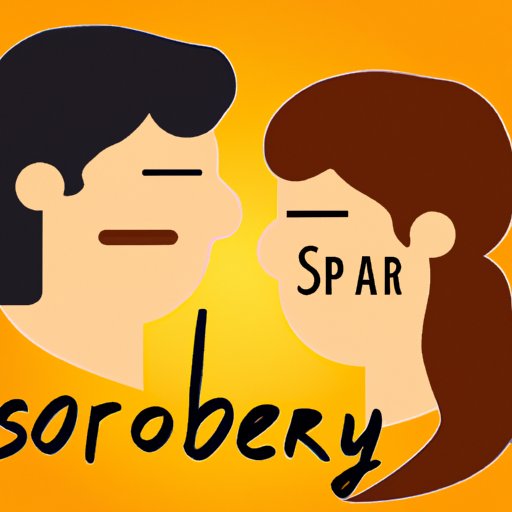Introduction
Saying sorry in any language can be challenging, especially when trying to communicate genuine empathy and remorse. While English has a broad vocabulary to convey apologies, Spanish also has various ways to say sorry. However, apologizing in Spanish can be a daunting task for many people, especially if they are not fluent in the language. This article aims to provide tips and guidelines for effectively apologizing in Spanish.
“Perdonar en Español: How to Say Sorry in Spanish”
The first step to apologize in Spanish is understanding the meaning of “perdonar” which means to forgive or to excuse. When apologizing in Spanish, there are simple and common phrases to use such as “Lo siento” which means “I’m sorry” and “Perdóname” which means “Forgive me”.
It is essential to note that there are differences between informal and formal apologies in Spanish, depending on the relationship between the speaker and the person being apologized to. For informal apologies, phrases like “Lo siento mucho” meaning “I’m really sorry” and “Lo lamento” meaning “I regret it” can be used. On the other hand, for formal apologies, phrases like “Le pido disculpas” meaning “I apologize to you” and “Disculpe usted” meaning “Excuse me” in a polite way are used.
“Mistakes Happen: The Top 5 Ways To Apologize in Spanish”
Knowing the most effective ways to apologize in Spanish is crucial. Here are some common scenarios where apologies are necessary, along with the phrases to use for each scenario:
- At work: “Me disculpo por mi error” meaning “I apologize for my mistake.”
- With friends: “No debí haber hecho eso” meaning “I shouldn’t have done that.”
- In a romantic relationship: “Lo siento mucho por haberte lastimado” meaning “I’m so sorry for hurting you.”
- With strangers: “Perdóneme” meaning “Excuse me” or “Lo siento mucho” meaning “I’m so sorry.”
- In public: “Le pido disculpas si mi comportamiento lo ha molestado” meaning “I apologize if my behavior has bothered you.”
“Apologizing in Spanish: A Beginner’s Guide to Asking For Forgiveness”
Beginners learning Spanish language can also effectively apologize by using basic phrases and vocabulary such as “Por favor” meaning “Please”, “No quise ofenderte” meaning “I didn’t mean to offend you.” Besides, it is essential to keep cultural differences in mind while apologizing. For instance, being direct is not the norm in some Hispanic cultures; apologies are made in a more indirect way.
“Lo Siento! Tips for Saying Sorry in Spanish with Sincerity”
In any language, sincerity is key when apologizing. When apologizing in Spanish, it is essential to convey sincerity. Here are some tips and examples of phrases to use to convey sincerity in an apology:
- Using tone: Using a sincere tone while apologizing can help convey your message. Adding “de verdad” meaning “sincerely” to your apology can emphasize your message.
- Being specific: Being specific with what you are apologizing for can help convey sincerity. For instance, “Lo siento por hacerte esperar” meaning, “I’m sorry for making you wait.”
- Showing emotion: Adding genuine emotions to your apology, such as frowning or holding your hands together, can show empathy and sincerity.
“Lost in Translation? Understanding How To Say Sorry in Spanish”
Apologies can often get lost in translation, leading to further misunderstandings. For instance, some words or phrases may seem interchangeable, but their connotations can vary in different contexts. Also, some words/phrases may not have direct translations, and their cultural meaning has to be understood.
To overcome translation difficulties, it is essential to study the context and use of the word or phrase and consult native Spanish speakers for clarification.
“Dos and Don’ts for Apologizing in Spanish: Cultural Nuances to Remember”
Understanding cultural differences regarding apologies is crucial to communicate effectively in Spanish. Here are some dos and don’ts for apologizing in Spanish:
- Do offer small gifts to show remorse in certain Hispanic cultures.
- Do take responsibility for your actions and avoid any blame shifting.
- Don’t use the incorrect level of formality.
- Don’t justify your actions; focus on apologizing and making things right.
Conclusion
To sum up, apologizing in Spanish can be a daunting task, but with the right tools and practice, anyone can learn to apologize effectively. It is essential to understand the basic phrases and cultural nuances involved in apologies in Spanish. By following the tips and guidelines in this article, you will be able to apologize in Spanish confidently and empathetically.
